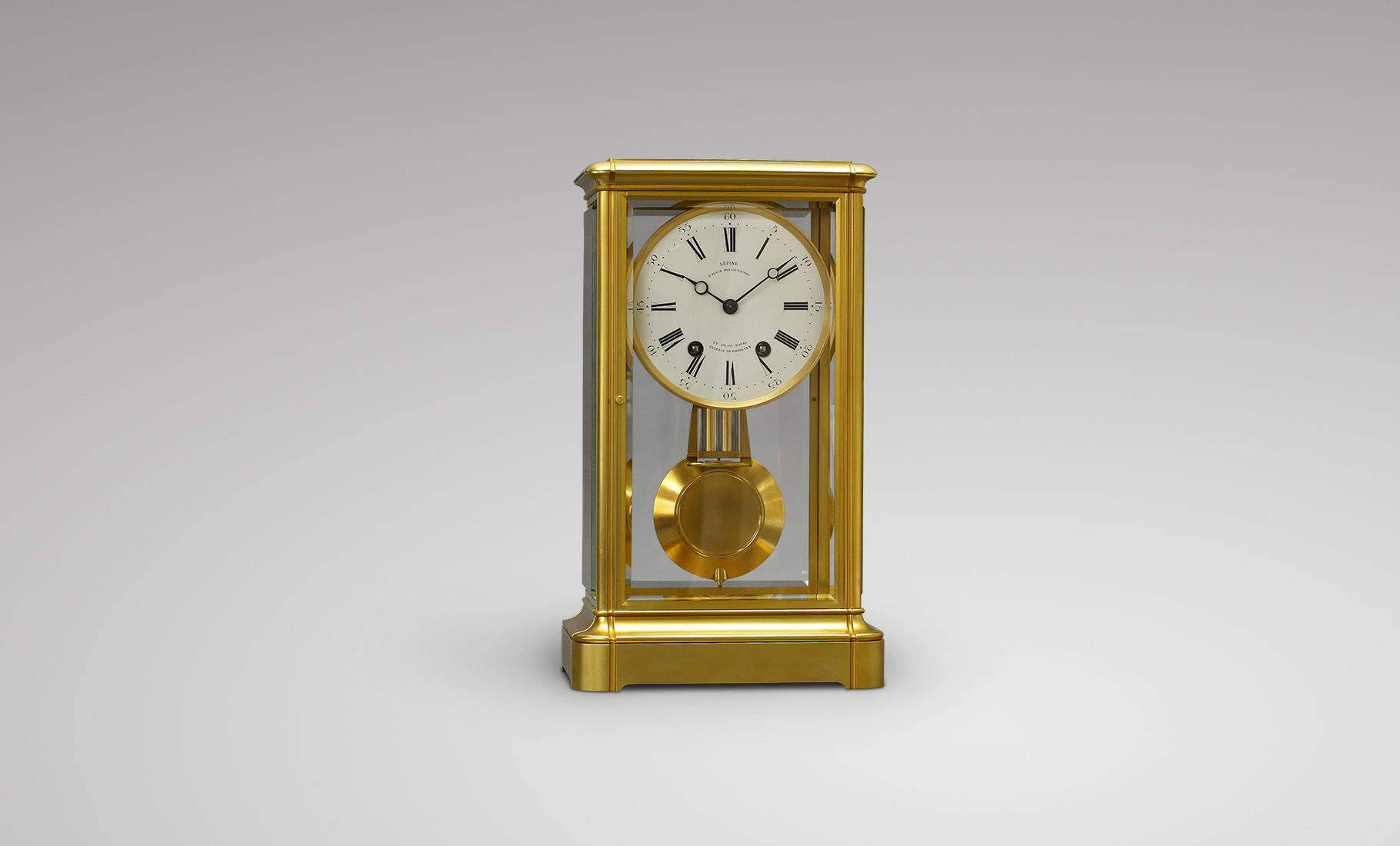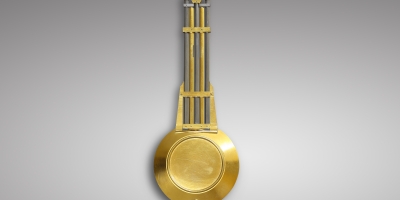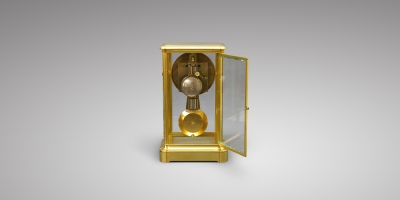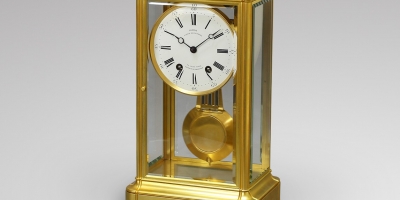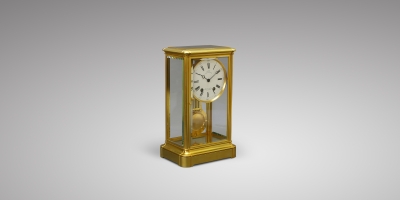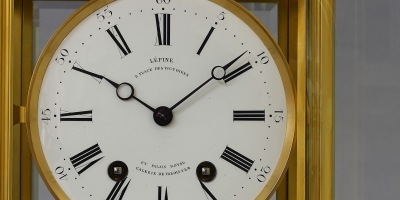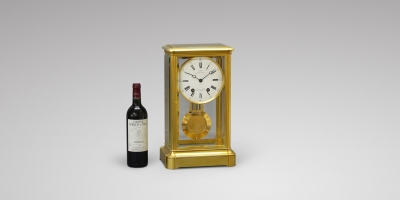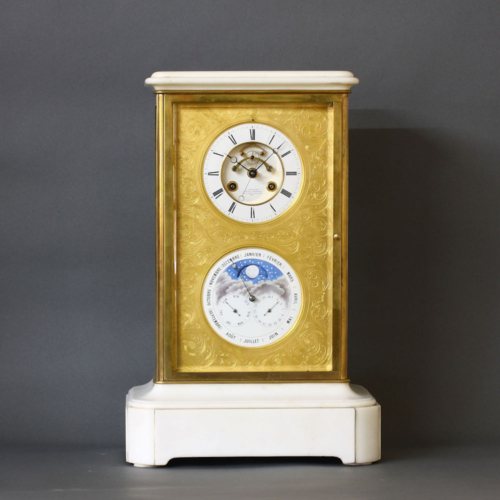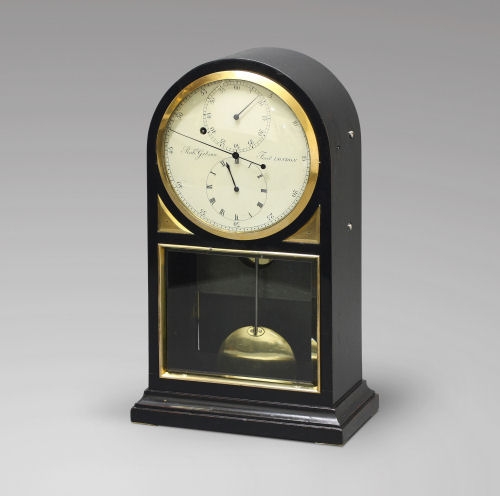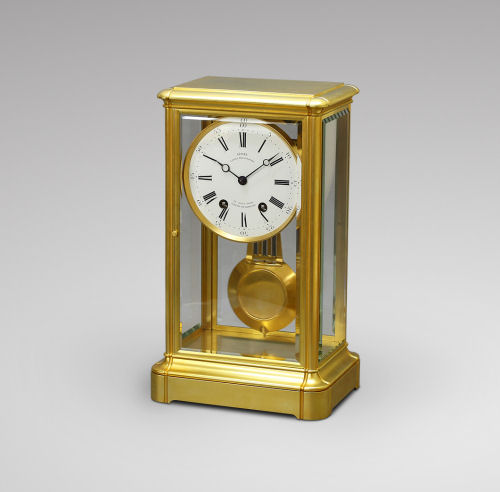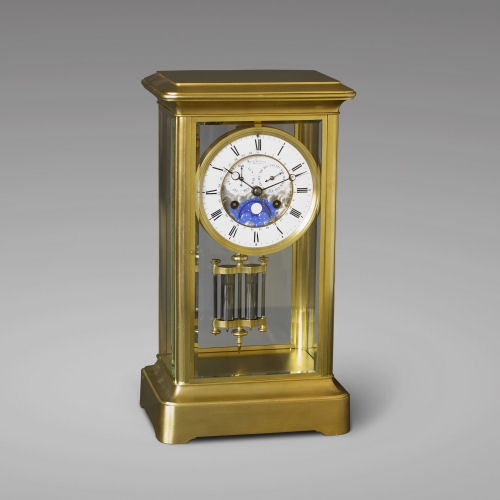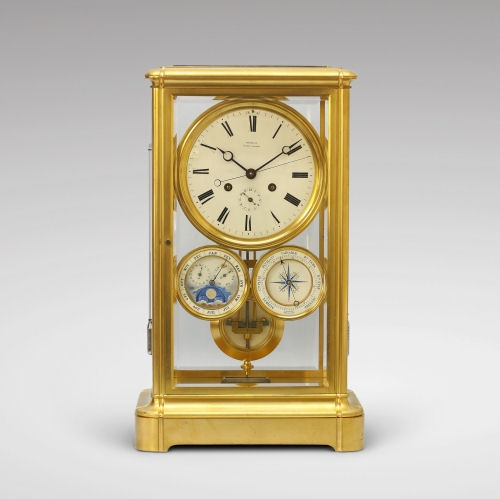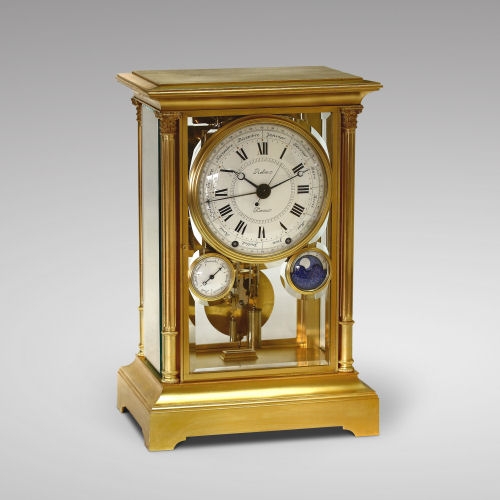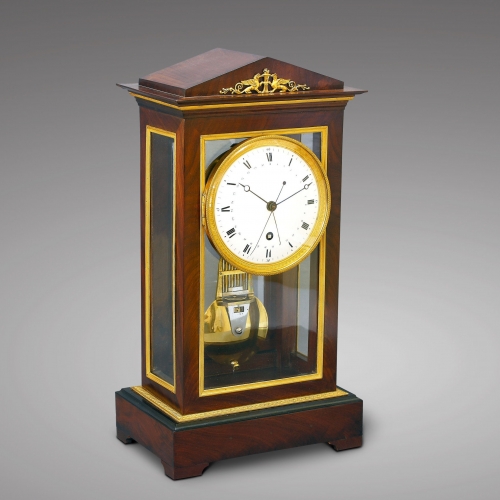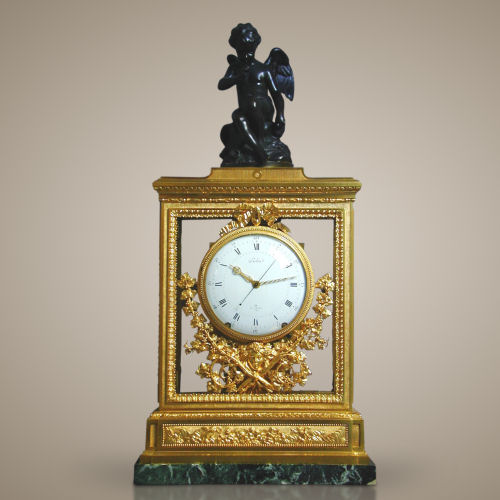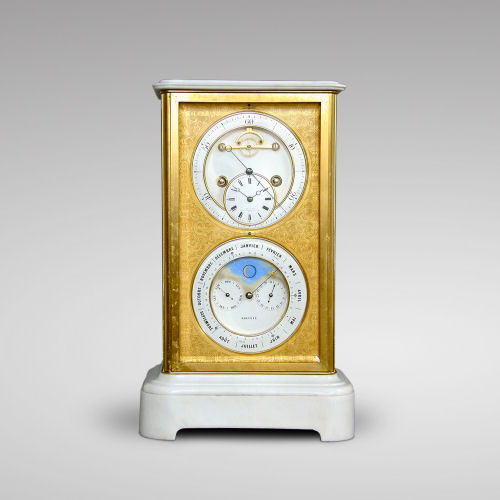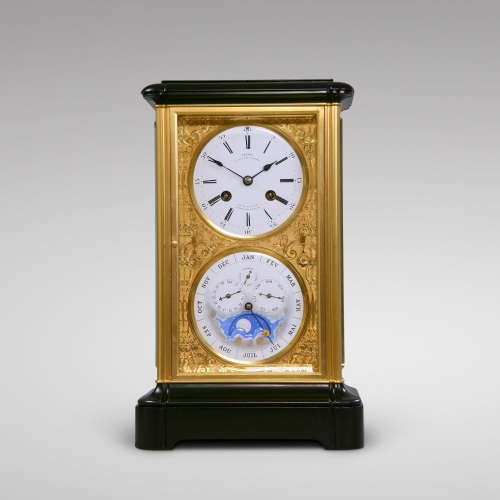LÉPINE, 2 PLACE DES VICTOIRES ET PALAIS ROYAL, GALERIE DE VALOIS 124, Louis-Philippe period precision table regulator clock, circa 1840. Movement of exquisite quality, similarly signed LÉPINE A PARIS, and numbered 12831, this number being also found on both barrels, the bell, and the dial’s backside. Brocot-type half-rollers escapement, wide steel blade suspension, large and heavy bob pendulum with temperature compensation steel and brass rods, as invented by John Harrison. Rack strike on a silvered bell fitted at the rear, with automatic synchronization with the hands, for the hours and half-hours. Two-weeks autonomy.
Large enamel dial with Roman numerals for the hours and Arabic numerals at five-minute intervals. Breguet style blued-steel hour and minute hands. Ormolu turned bezel.
Chased gilt-bronze case with bevelled glass on all four sides allowing view of movement. Front and rear door.
Dimensions
Height: 43 cm (16" 7/8), Width: 25 cm (9" ¾), Depth. 17 cm (6" ¾).
Lépine à Paris
Jean-Antoine Lépine (1720-1814) was the founder of the prestigious firm Lépine that operated until 1919. At the age of twenty-four Lépine became an apprentice to André-Charles Caron, clockmaker to the French King (Horloger du Roi et du Garde-Meuble de la Couronne). It was not long before he established himself as a maker of watches with ingenious mechanisms that reduced their thickness and revolutionized watchmaking. He also made mantel clocks with very complicated movements that earned him the title of Horloger du Roi; Lépine produced the movement of the double-faced clock for Louis XV’s famous roll-top desk at Versailles. He supplied twenty mantle clocks to Louis XVI, and others to Madame Elisabeth as well as the Spanish Court.
In 1783 Lépine entered into partnership with his son-in-law Pierre-Claude Raguet (1753-1810), leaving him the business in 1784, with the workshop under the management of Lépine’s nephew, Jean-Antoine II. Highly successful during the First Empire, Lépine became Watchmaker to Her Majesty the Empress-Queen in 1805, then Watchmaker to Empress Josephine in 1809.
After his death in 1810, Raguet’s only son, Alexandre, sold the business to Jean-Paul Chapuy. Chapuy was probably the one responsible for assigning a numbering system – beginning with no. 4000 – to Lépine mantel clock movements. All pieces signed Lépine, place des Victoires can be attributed to his production. Figuring among his clients were: Napoleon I; Jerome, King of Westphalia; Charles IV, King of Spain; and the princes de Talleyrand.
Chapuy sold the business to Calvet, who was succeeded in 1840 by Fabre. Boulay purchased the firm in 1853 and resold it to Roux in 1885. It was then passed on to Ferdinand Verger, who resold it in 1914. The business continued under the name Lépine until 1919, when it was taken over by L. Leroy. Though Lépine moved locations several times, from Place des Victoires in 1800 to Palais Royal in 1860 and Rue Vide Gousset in 1870, the business remained established in the Palais-Royal quarter of Paris throughout the entire period.
Museums
Château of Compiègne, France; Detroit Institute of Arts, USA; Patrimonio Nacional, Spain; Deutsches Uhrenmuseum, Furtwangen, Germany; Schloss Wilhemshöle, Kassel, Germany; M.I.H., La Chaux-de-Fonds, Switzerland; Royal Collection, London; Minneapolis Institute of Arts, USA; Louvre Museum, Paris; Museum of Fine Arts, Prague; Hermitage Museum, Saint Petersburg.
Bibliography
Tardy, Dictionnaire des horlogers français, (Paris, 1972);
J.-D. Augarde, Les Ouvriers du Temps, La Pendule à Paris de Louis XIV à Napoléon Ier.
Price
€ 8000.-
